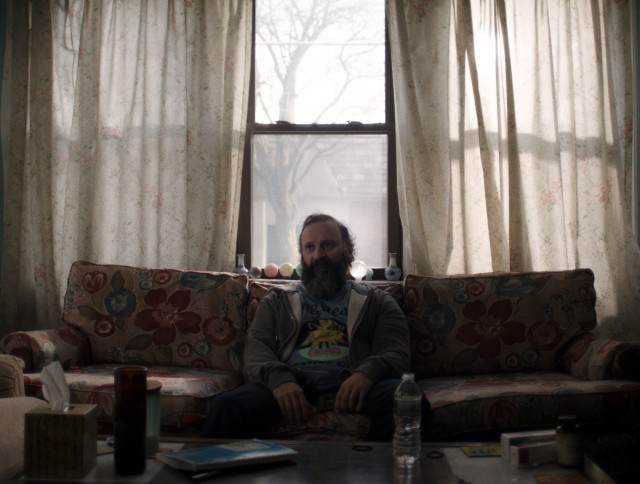Push to Enter, by Anthony Nicolau, is the story of a delivery driver navigating the bustling streets of New York City. Being a narrative set in my native city and featuring the exceptional casting of Laith Nakli (whom I adore), this is precisely the type of story I would be foolish not to enjoy. Yet my feelings towards this short transcend mere liking; as I found myself completely captivated and truly in love with it.
Push to Enter shows us that with the monotony of a day as a working class person, in the current state of the world (this particular state being the midst of a pandemic), an intense amount of emotion can quickly fester. At a certain point, monotony becomes a rollercoaster, by chance or by choice. Hugo, the central figure in this narrative, stands at a crossroads: he must either demonstrate his worth to himself or embark on a path considerably less lawful. Both options will result in a tumble down a morality rabbit hole.
“Greater clarity comes out of the mistakes we make rather than our successes”
“My writing partner Andy Kabel and I began developing a story around the themes of desperation”, Nicolau explains, before adding that they wanted to explore “how flexible morality and ethics can become when someone feels at the end of their rope”. With a growing interest in what they describe as “the humanity of ‘bad decisions'”, the pair set out to create a narrative which displayed how sometimes “greater clarity comes out of the mistakes we make rather than our successes”.
The close ups, long takes, and claustrophobic framing employed in Nicolau’s short – shot by DP Eric Teti – do a stellar job of communicating Hugo’s internal battles externally, and in turn, a bond quickly manifests between character and viewer. Watching Push to Enter it’s hard not to feel like you are in solidarity with the man on screen. Maybe this is an underlying solidarity across service workers, which reveals itself in tired eyes and motionless standing, but I think it’s also in the thoughtful filmmaking.
“Our goal with this project is to highlight how effortlessly we can become engrossed in our personal comforts, while failing to acknowledge the common thread of experience that connects us all through life’s highs and lows”, Nicolau reveals. “We wanted to approach this subject without falling into the trap of being overly sentimental. It’s not just about evoking empathy but about sparking a realization – a realization that taking a moment to understand someone else’s life can bridge gaps we didn’t even know existed.”

“I find the 4:3 ratio to be reminiscent of a portrait” – Nicolau discussing the aesthetic choice behind the short’s photography.
A recognizable and wholly relatable battle of the mind, you don’t have to understand all of Hugo’s impulsive thoughts to a tee to be able to empathize and relate to him. I think this effect is possible because the film gives just enough and nothing more. There’s a perfect amount of ambiguity and lingering. Things are felt but not said, shown not told.
The director’s inspirations ranged from Robert Bresson to Pedro Costa and speaking about the choice of shooting in a 4:3 ratio, he says that decision was motivated by a desire for every frame “to convey the depth of human experience”. There is a certain intimate quality to be found in the 4:3 ratio as it holds the power to envelop the viewer and present a very personal perspective. “This intimate framing was instrumental in my aim to juxtapose hope and despair”, Nicolau confesses, adding that with this aesthetic choice he hoped “to show how these two extremes often exist in close proximity to each other”.
This level of attention is evident in every frame and cut, with Push to Enter a film that has stuck with me days for after viewing. Nicolau is somewhat of a seasoned director in the world of shorts, with five previous titles (dating back to 2012) in his credits, but with this our first introduction to his work, we’re left eager to see more.
